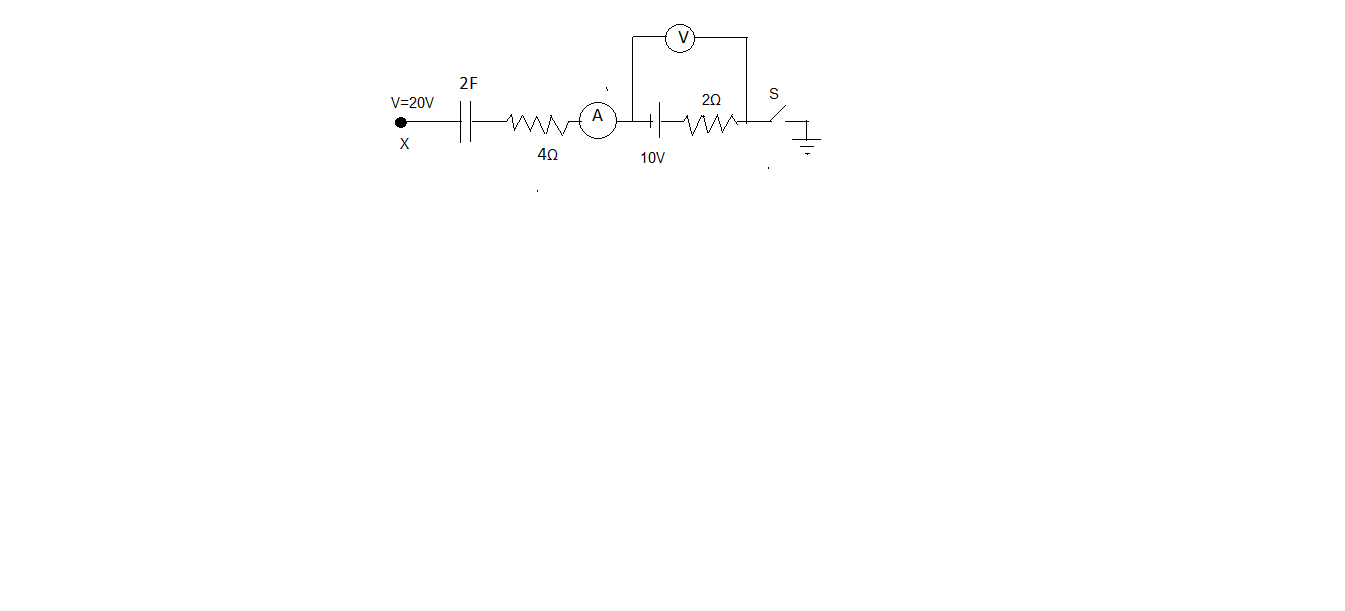Question
Question: Initially the capacitor was uncharged and the switch was open. Switch is closed at \( t = 0 \) , Amm...
Initially the capacitor was uncharged and the switch was open. Switch is closed at t=0 , Ammeter and voltmeter are ideal. [All units in S.I.]

| List 1 | List 2 |
|---|---|
| Reading of voltmeter after long time | 0 |
| Just after closing the switch reading of ammeter | 5 |
| Just after closing the switch reading of voltmeter | 10 |
| Charge on capacitor after long time | 60 |
Solution
Hint : In order to solve this question, we are going to see what changes occur in a circuit when a capacitor is charged. Just after closing the switch, the reading signifies the beginning stage of the charging of a capacitor and the ammeter and voltmeter readings are taken accordingly and also that for after the long time.
The current i for a series circuit having two resistors r1 and r2 , and voltages V1 and V2 is
i=r1+r2V1+V2
Complete Step By Step Answer:
After a long time, the current through the circuit since the capacitor will behave as an open circuit. Therefore, voltmeter will read 0V
Just after closing the switch, the voltage will be zero, thus the reading of the ammeter that will be equal to the current will be i=4+220+10=5A
Reading of voltmeter just after closing the switch will be 20−2i=10V
After a long time, entire voltage will appear across the capacitor, hence, Q=CV=2×30=60C
Note :
In this case, it is given that the ammeter and the voltmeter are the ideal ones. This means that in the case of an open circuit, the voltage is completely zero only, and there are no losses in the readings of the voltmeter and the ammeter. An ideal voltmeter has infinite resistance whereas an ideal ammeter has zero resistance.
